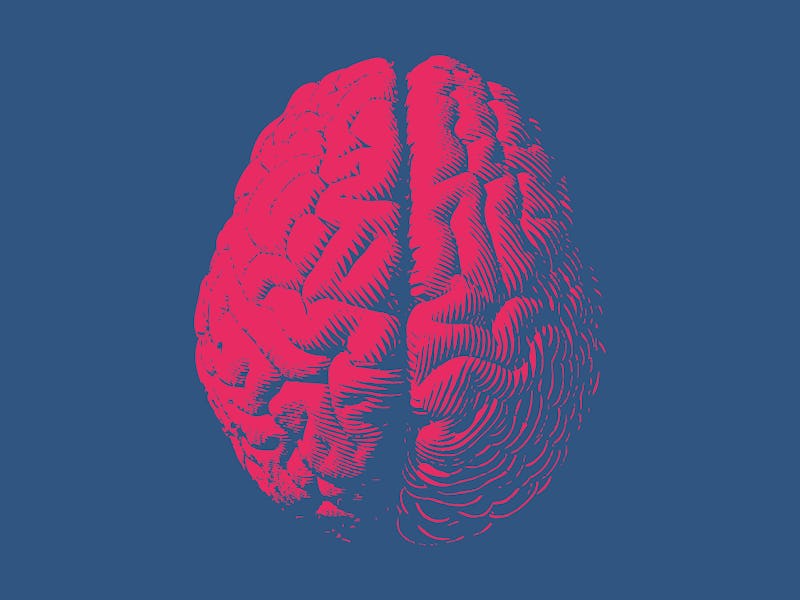Teenagers are a mystery, but machine learning could help crack the code
Your poor impulse control might not be totally your fault.

Being a teenager is rough: your hormones are raging, school work and extracurriculars take up all your time, and your brain is literally transforming inside your skull. For young adults with poor impulse control or a history of acting out, their behavior might not be entirely their fault. It could be the specific way their executive function networks are developing that control things like working memory and task switching.
For years scientists believed that these networks were all mapped out the same way across adults' brains, but recent studies have shown that there might actually be much more variability in how these networks interact with the brain's architecture. To investigate how this might affect individual function in teenagers as well, researchers used a machine learning approach to map 17 functional networks in 693 children and young adults and found not only the same levels of variability as in adults but that these differences could predict the individual's observed executive functioning.
The study was published Wednesday in the journal Neuron and used machine learning to analyze fMRI scans from the 693 participants, who were ages eight to 23. Each scan was 27-minutes long and the collected information about the brain's structure and where each individual's functional networks fell on it. Looking at this data, the researchers were not only able to predict the participants' ages but also predict their level of executive functioning. The authors write that participants with more space in the brain devoted to these functional networks demonstrated higher levels of executive function (think impulse control or problem solving) while those with smaller amounts of dedicated space demonstrated lesser levels of executive functioning.
“The spatial layout of these networks predicted how good kids were at executive tasks,” Zaixu Cui, a post-doctoral fellow in Satterthwaite’s lab and the paper’s first author, said in a statement. “Kids who have more ‘real estate’ on their cortex devoted to networks responsible for executive function in fact performed better on these complex tasks.”
Theodore Satterthwaite, a co-author of the study and assistant professor of Psychiatry in the Perelman School of Medicine at the University of Pennsylvania, tells Inverse that the effects of lower executive function can materialize in many different ways from childhood to adulthood.
"These are the abilities that mature in the most protracted way throughout childhood, adolescence, and early adulthood," says Satterthwaite. "Kids get better as they grow up, but at any given age, people who have worse executive functions have problems. When they're kids they have problems in school, when they're older they may be more likely to get into fights. It's associated with drug use, teenage pregnancy, car wrecks. There are all sorts of negative outcomes."
The researchers write that these differences highlight the brain's neuroplasticity, or how it's able to break and remake connections, and point toward a future where personalized diagnostics and therapeutics can target an individual's unique brain structure instead of a theoretical, idealized brain model.
Satterthwaite tells Inverse that these therapies might take the form of something called transcranial magnetic stimulation (TMS.) TMS treatment for depression and memory loss has shown moderate benefits, but Satterthwaite says the hope is that using more targeted information instead of a general model could bring this technology to clinical levels of significance.
While being able to identify these structural and functional differences in brains is extremely important, it doesn't bring researchers any closer to understanding why functional networks like these would develop differently from individual to individual.
"It's unknown," says Satterthwaite. "We don't know if there are genetic factors or environmental factors, probably it would be both... Parents with good executive function tend to have children with good executive function, [but] also there are known things in the environment that make people have worse executive function, like trauma or nutrition."
To get to the bottom of this, Satterthwaite says it will be up to developmental neuroscientists and perhaps studying the developing brains of babies still in utero.
Going forward, the authors write that it will be important to do a larger, longitudinal study over many years to see how such a structure develops and changes. They also write that since their method is primarily data-driven, it will be important to do neurobiological studies as well to see how the mechanisms of this discovery truly work.
Summary: The spatial distribution of large-scale functional networks on the cerebral cortex differs between individuals and is particularly variable in association networks that are responsible for higher-order cognition. However, it remains unknown how this functional topography evolves in development and supports cognition. Capitalizing on advances in machine learning and a large sample imaged with 27 min of high-quality functional MRI (fMRI) data (n = 693, ages 8–23 years), we delineate how functional topography evolves during youth. We found that the functional topography of association networks is refined with age, allowing accurate prediction of unseen individuals’ brain maturity. The cortical representation of association networks predicts individual differences in executive function. Finally, variability of functional topography is associated with fundamental properties of brain organization, including evolutionary expansion, cortical myelination, and cerebral blood flow. Our results emphasize the importance of considering the plasticity and diversity of functional neuroanatomy during development and suggest advances in personalized therapeutics.